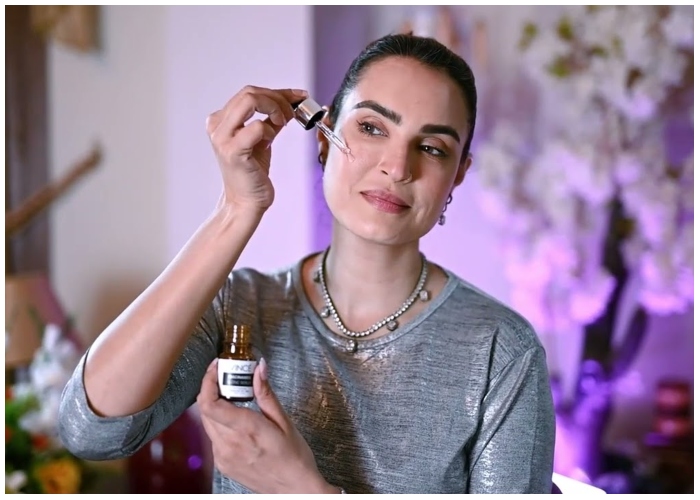Walk down any beauty aisle or scroll through skincare ads, and you’re bound to see bold promises: “Erase wrinkles!” “Turn back time!” “Get glowing, youthful skin!” But how many of these anti-aging serums actually work—and how many are just slick marketing? With prices ranging from $12 to $300, knowing what you’re paying for matters.
Let’s cut through the buzzwords and look at what science and dermatologists actually say about anti-aging serums. Here’s your 700-word guide to what’s worth your time—and what’s not.
What Makes a Serum “Anti-Aging”?
An anti-aging serum is typically a lightweight, fast-absorbing formula packed with active ingredients that target signs of aging like fine lines, wrinkles, uneven tone, and loss of firmness. Unlike moisturizers, serums usually don’t focus on hydration alone—they’re designed to deliver concentrated ingredients deep into the skin.
But here’s the catch: not all serums are created equal, and not all ingredients are backed by science. So, let’s break it down.
Ingredients That Actually Work
1. Retinol and Retinoids
Considered the gold standard in anti-aging skincare, retinol (and its prescription-strength cousins, retinoids) helps increase cell turnover, stimulate collagen, and fade dark spots. They’re clinically proven—but they can also be irritating, especially for beginners.
Pro tip: Start slow—once or twice a week—and always use SPF, as retinoids can increase sun sensitivity.
2. Vitamin C (L-Ascorbic Acid)
Vitamin C is a powerful antioxidant that brightens the skin, evens tone, and boosts collagen. Look for concentrations between 10–20%, and make sure it comes in a dark, airtight bottle—it’s notoriously unstable.
Watch out: Some formulations oxidize quickly and can become ineffective. If your serum turns brown, toss it.
3. Niacinamide
This form of vitamin B3 is a multitasker. It improves skin elasticity, strengthens the barrier, reduces redness, and smooths texture. It’s gentle enough for most skin types and plays well with other ingredients.

4. Peptides
Peptides are amino acid chains that tell your skin to make more collagen. While results vary, some peptides have been shown to improve skin firmness and elasticity. They’re best when combined with other proven ingredients like retinol or antioxidants.
5. Hyaluronic Acid
This hydrating powerhouse plumps the skin temporarily by drawing in moisture. While it doesn’t reverse aging, it can make your skin look smoother and more youthful—especially when layered under other treatments.
What’s Mostly Hype?
1. 24K Gold and Diamond Dust
Sure, they sound luxurious—but there’s no peer-reviewed research proving that rubbing gold or crushed gems into your face does anything beyond sparkle. Save your money.
2. Stem Cells (Plant-Based)
Often used as a buzzword, plant stem cells don’t have the ability to regenerate human skin. While they may have antioxidant properties, their anti-aging potential is largely unproven.
3. Snail Mucin (Controversial)
Popular in K-beauty, snail mucin is praised for hydration and skin repair—but its anti-aging claims are still under scientific review. Anecdotally effective? Maybe. Clinically proven? Not yet.
4. Exotic Botanicals
Dragon’s blood, caviar, blue tansy—some of these ingredients smell great and feel fancy, but many lack real data to support long-term anti-aging effects. Unless you love the experience, they’re not must-haves.
Price Doesn’t Equal Effectiveness
Don’t assume a $200 serum works better than a $25 one. Many affordable products contain the same concentrations of active ingredients as their high-end counterparts. What you’re often paying for is packaging, fragrance, or brand prestige.
In fact, some drugstore serums—like those from The Ordinary or CeraVe—are praised by dermatologists for being both effective and budget-friendly.
Layering: More Isn’t Always Better
One common mistake? Using too many serums at once. Layering five different actives can irritate your skin and reduce effectiveness. Instead, focus on a few well-formulated products and give them time to work—visible results usually take 4–12 weeks.
Stick to a routine: cleanse, apply your serum(s), moisturize, and finish with sunscreen in the morning. At night, retinol should be applied after cleansing and before moisturizer.
What Dermatologists Recommend
Most dermatologists agree: a good anti-aging routine includes a combination of SPF, retinoids, antioxidants, and moisturizers. Serums can supercharge your routine—but they’re not miracle cures.
Keep in mind: If you’re struggling with deep wrinkles, sagging, or pigmentation, topical serums can only go so far. In-office treatments like microneedling, laser therapy, or fillers may offer more dramatic results.
Cutting Through the Noise
The anti-aging industry thrives on confusion. But by focusing on proven ingredients and realistic expectations, you can build a routine that truly supports your skin over time. Look past the glittery packaging and influencer hype—your skin deserves better.
A good anti-aging serum won’t stop the clock, but it can help you age with grace, confidence, and healthy skin. That’s not magic. That’s science—and smart skincare.